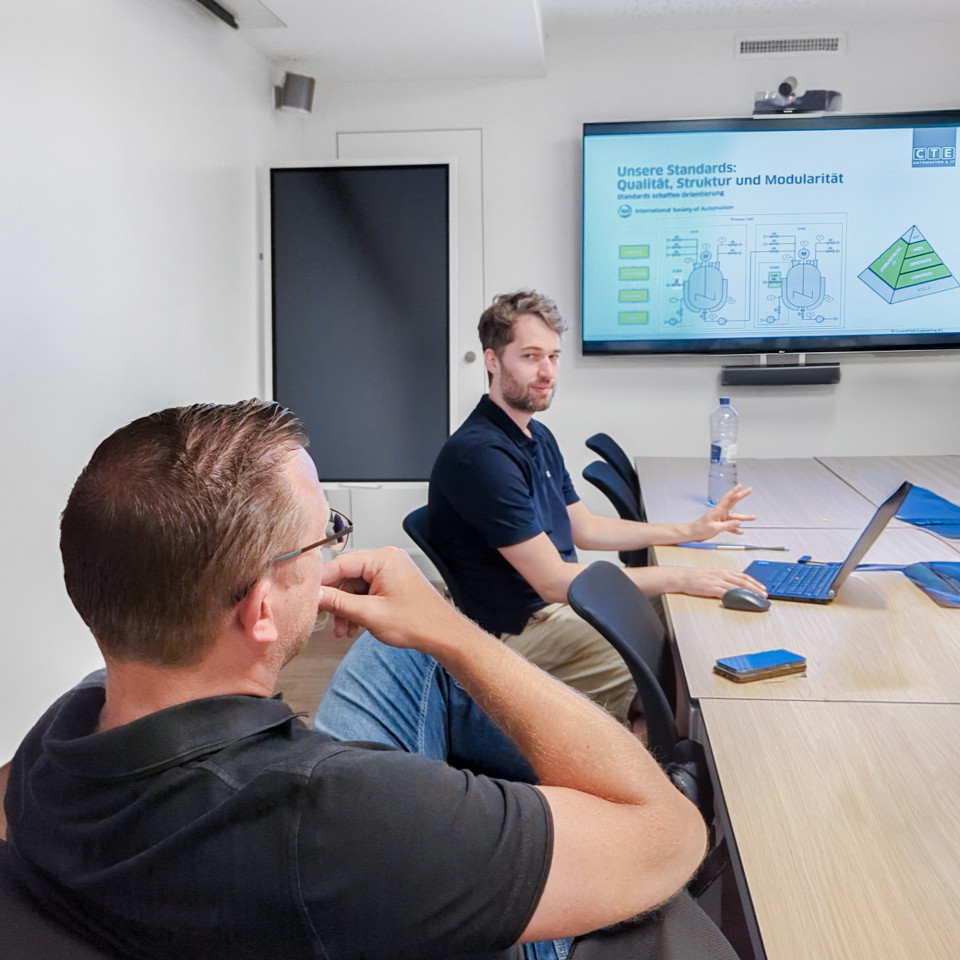Cocktail machine as a practical example of automation technology
The University of Applied Sciences Northwestern Switzerland and ControlTech Engineering AG have been working together for many years and have already realized various projects together. At the beginning of November, CTE was the destination of an excursion for students of chemical and bioprocess engineering at the FHNW. They tested our cocktail machine.
Following successful projects such as the introduction of a process control system with Siemens PCSneo at a production plant in the Process Technology Center or the exciting data pilot project with our Data Science Framework, the FHNW wanted to enable its chemical and bioprocess engineering students to learn more about the practical applications and benefits of modular automation technology. After a theoretical part in which the basics of the modular automation approach based on the ISA88 were taught, the students had the opportunity to develop a model of their own cocktail machine and recipes for it, which were tested and evaluated on site.
Insights into automation: theory meets practice
The exchange with future specialists is of great importance to CTE: "Passing on knowledge is in our genes," explains Dominic Brunner, CEO of CTE. Even if the students of chemical and bioprocess engineering are not necessarily future employees of CTE, we believe it is essential that cooperation between these specialist areas and automation can be organized as smoothly as possible within the projects. "We want to awaken the students' interest in and understanding of automation and show them what influence they will later have on the overall success of a project team consisting of the various specialist areas," adds Dominic Brunner.
In the practical part, the students first developed a complete model of a cocktail machine, consisting of a process model, a physical model and a procedural model. This served to gain initial practical experience with the ISA88 standard and to understand the advantages of a modular architecture even for a less complex system. They then specified their own recipe for a non-alcoholic drink, which was integrated directly into the machine by one of our programmers. The students were able to experience live how the well thought-out system architecture enables fast and efficient implementation and makes communication with the programmer clear and unambiguous.
Exotic Punch is the winning drink
Thanks to this structure, it was possible to produce the first drinks on the machine just 45 minutes after the start of recipe development. The drinks produced included Gin Tonic Lime, Sour Blue and Exotic Punch. The winning recipe was chosen as the highlight of the workshop: the Exotic Punch impressed with its taste and won the award.
Recipe for the winning drink Exotic Punch
Ingredients:
70 ml tonic water
30 ml non-alcoholic gin
30 ml soda
20 ml berry syrup
20 ml lime juice
Preparation:
Place all the ingredients in a blender and mix well.
Chill the mixture to around 7 degrees Celsius - ideally in the fridge or with ice cubes.
Serve in a nice glass.
Showroom for smart automation solutions
Our automated cocktail machine shows in miniature what CTE has to offer: A sophisticated automation concept ensures precision and efficiency. The machine is networked and online, and secure thanks to our expertise in IT infrastructure and security solutions. Data visualization makes the cocktail machine intuitive to operate and monitor so that everything runs smoothly. And thanks to our expertise in data management, we can track exactly which drinks were produced and when.
We are planning a showroom in the new building to make this interplay of all areas tangible for interested parties. "We are looking forward to showcasing the neatly interlinked concepts and can hardly wait ourselves," says CEO Dominic Brunner.



